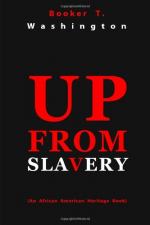There are in constant operation at the school, in connection with thorough academic and religious training, thirty industrial departments. All of these teach industries at which our men and women can find immediate employment as soon as they leave the institution. The only difficulty now is that the demand for our graduates from both white and black people in the South is so great that we cannot supply more than one-half the persons for whom applications come to us. Neither have we the buildings nor the money for current expenses to enable us to admit to the school more than one-half the young men and women who apply to us for admission.
In our industrial teaching we keep three things in mind: first, that the student shall be so educated that he shall be enabled to meet conditions as they exist now, in the part of the South where he lives—in a word, to be able to do the thing which the world wants done; second, that every student who graduates from the school shall have enough skill, coupled with intelligence and moral character, to enable him to make a living for himself and others; third, to send every graduate out feeling and knowing that labour is dignified and beautiful—to make each one love labour instead of trying to escape it. In addition to the agricultural training which we give to young men, and the training given to our girls in all the usual domestic employments, we now train a number of girls in agriculture each year. These girls are taught gardening, fruit-growing, dairying, bee-culture, and poultry-raising.
While the institution is in no sense denominational, we have a department known as the Phelps Hall Bible Training School, in which a number of students are prepared for the ministry and other forms of Christian work, especially work in the country districts. What is equally important, each one of the students works . . . each day at some industry, in order to get skill and the love of work, so that when he goes out from the institution he is prepared to set the people with whom he goes to labour a proper example in the matter of industry.
The value of our property is now over $700,000. If we add to this our endowment fund, which at present is $1,000,000, the value of the total property is now $1,700,000. Aside from the need for more buildings and for money for current expenses, the endowment fund should be increased to at least $3,000,000. The annual current expenses are now about $150,000. The greater part of this I collect each year by going from door to door and from house to house. All of our property is free from mortgage, and is deeded to an undenominational board of trustees who have the control of the institution.
From thirty students the number has grown to fourteen hundred, coming from twenty-seven states and territories, from Africa, Cuba, Porto Rico, Jamaica, and other foreign countries. In our departments there are one hundred and ten officers and instructors; and if we add the families of our instructors, we have a constant population upon our grounds of not far from seventeen hundred people.




